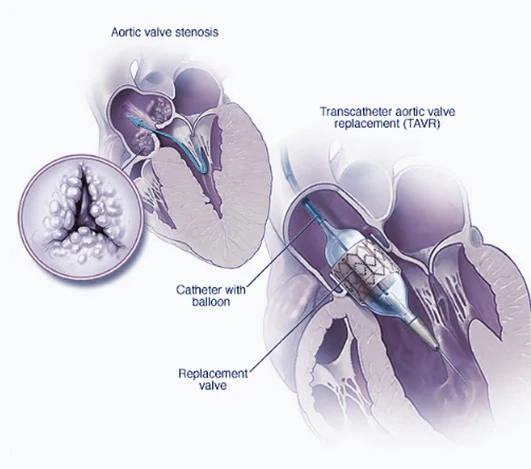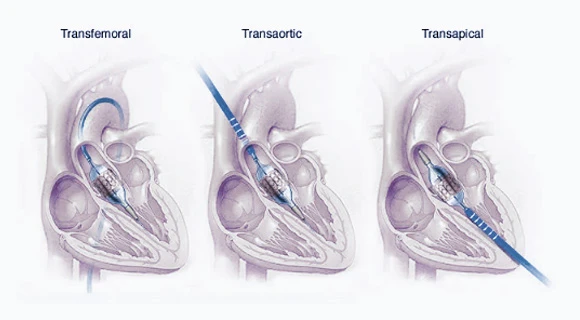Transcatheter Aortic Valve Replacement (TAVR)
Transcatheter aortic valve replacement (TAVR) is a medical procedure designed to address a narrowed aortic valve that fails to open fully, a condition known as aortic valve stenosis. Positioned between the left lower heart chamber and the body's primary artery, the aortic valve plays a crucial role in regulating blood flow. Aortic valve stenosis impedes this flow, either blocking it or causing a significant slowdown.
TAVR stands out as a minimally invasive alternative to traditional open-heart valve surgery, utilizing smaller incisions. This approach proves particularly beneficial for individuals ineligible for conventional heart surgery aimed at aortic valve replacement. By opting for TAVR, individuals experiencing symptoms such as chest pain, shortness of breath, and other manifestations of aortic valve stenosis can find relief.
The decision to undergo TAVR involves a collaborative effort between the patient and a specialized team comprising heart doctors and surgeons. Through thorough discussions and assessments, this team determines the most suitable treatment option for the individual. Transcatheter aortic valve replacement is also commonly referred to as transcatheter aortic valve implantation (TAVI).
Why TAVR is Done
TAVR is recommended for severe aortic stenosis causing symptoms, malfunctioning biological tissue aortic valves, or when other health conditions make traditional surgery risky.
Risks of TAVR
Possible risks include bleeding, blood vessel problems, issues with the replacement valve, stroke, heart rhythm problems, kidney disease, heart attack, infection, and, rarely, death. Studies indicate similar risks of disabling stroke and death compared to aortic valve replacement surgery.
Catheter Access in TAVR:
During TAVR, a catheter is inserted into a blood vessel, usually in the groin or chest, guided by imaging tools. A biological tissue valve is sent through the catheter, placed in the aortic valve area, and secured in place, often with a balloon. Vigilant monitoring ensures a safe procedure.
Post-TAVR:
After TAVR, ICU observation may be necessary, and hospital stay duration varies. Patients receive instructions for wound care and signs of infection. Medications may include blood thinners and antibiotics. Regular checkups are essential to monitor the new valve's functionality.
Results of TAVR:
TAVR may reduce aortic valve stenosis symptoms, improving quality of life. Adopting a heart-healthy lifestyle post- TAVR is crucial: no smoking, a balanced diet, regular exercise (with doctor consultation), and maintaining a healthy weight.




